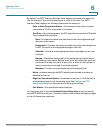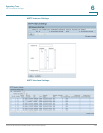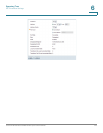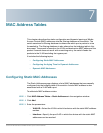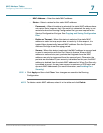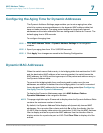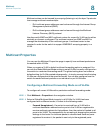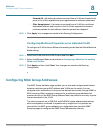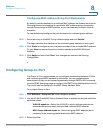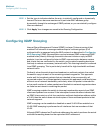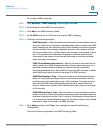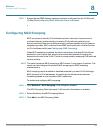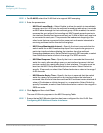
Multicast
Multicast Properties
Cisco Small Business SG200 Series 8-port Smart Switch 132
8
Multicast entries can be learned by snooping (listening in on) the layer 3 protocols
that manage multicast memberships:
• IPv4 multicast group addresses can be learned through the Internet Group
Management protocol (IGMP).
• IPv6 multicast group addresses can be learned through the Multicast
Listener Discovery (MLD) protocol.
Interfaces with IGMP and MLD multicast routers for a specific VLAN can be either
statically or dynamic configured. The multicast routers use IGMP and MLD to
manage the membership of the multicast groups. A multicast router is also
required in order for the switch to support IGMP/MLD snooping properly in a
VLAN.
Multicast Properties
You can use the Multicast Properties page to specify how multicast packets are
forwarded within VLANs.
When you create a VLAN, a default multicast forwarding option is assigned. You
can use the Global Multicast Mode setting to set all VLANs currently configured on
the switch to a selected forwarding mode. The global setting does not create a
default setting for VLANs created subsequently—it simply ensures that all existing
VLANs are configured with the specified mode. You can also configure how the
switch forwards multicast packets on an individual or per-VLAN basis.
Configuring a Multicast Forwarding Mode on all VLANs
To configure all current VLANs with a particular multicast forwarding mode:
STEP 1 Click Multicast > Properties in the navigation window.
STEP 2 Select a Global Multicast Mode to apply to all VLANs. If a VLAN has been
configured with a different mode, it is reset to the following mode:
• Forward Unregistered—If a packet is received from a VLAN with a
multicast destination address and no ports in the VLAN are registered to
receive multicast packets for that address, then the packet is flooded to all
ports in the VLAN. The responsibility for accepting or dropping the packets
belongs to the hosts. If a multicast packet is received and there are ports
registered to receive it, the packet is sent only to the registered ports.



